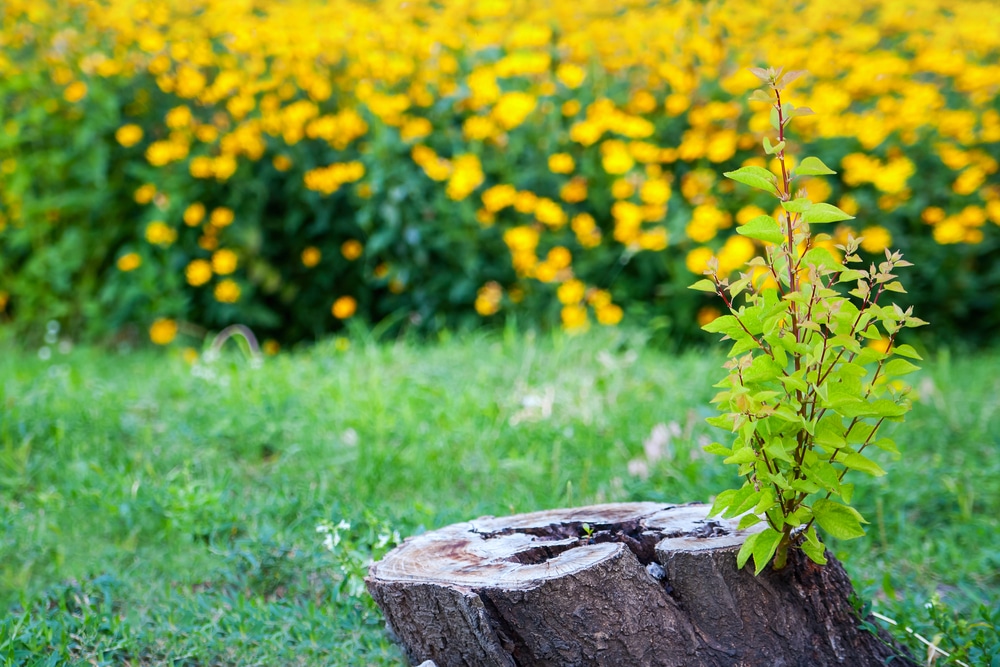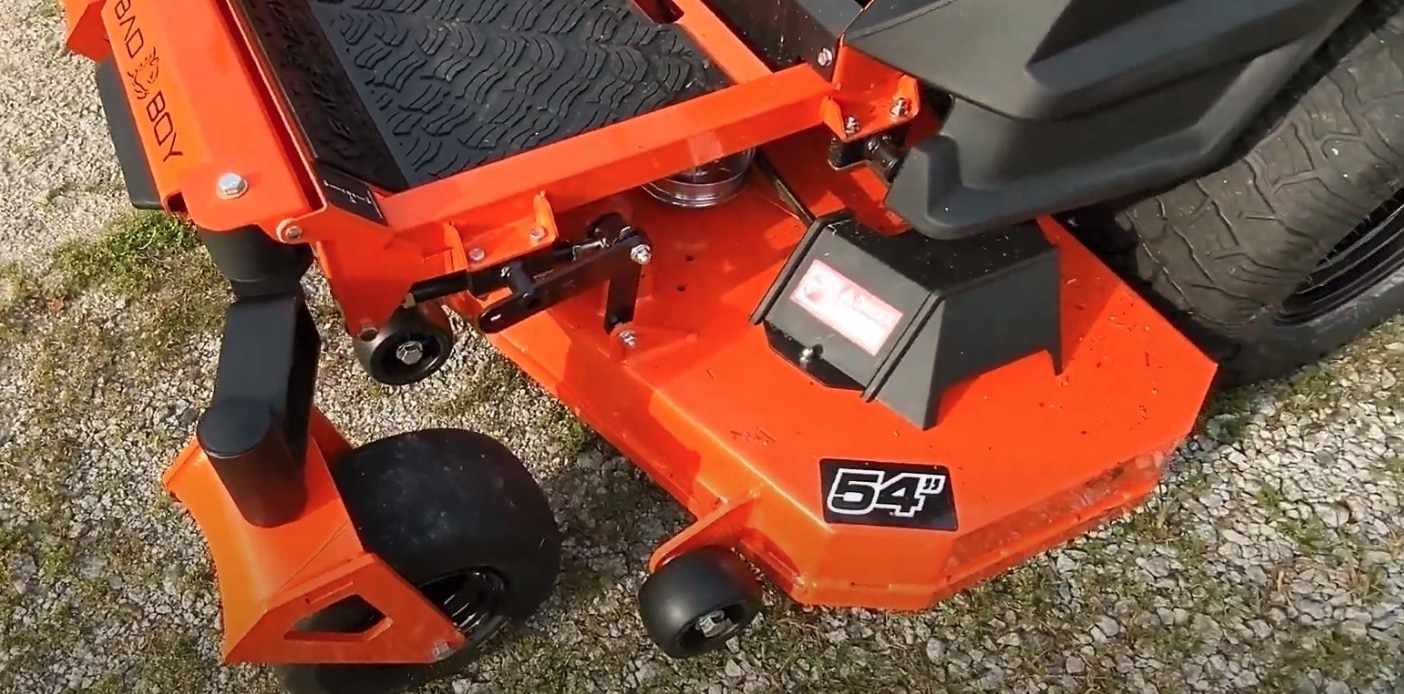If you have recently hit a stump with a riding lawn mower, you may be wondering what type of damage that you could have done to it.
The odds are that everything is fine, but there can be some issues caused by this.

Bent Blade
If you hit a stump while mowing, the most common problem that can occur is a bent blade. You will know if this has happened as there will be a noticeable vibration that happens immediately after you hit the stump.
The mower will vibrate because the blade will no longer be balanced due to the bending. To confirm that the blade is bent, you will need to take the deck off and inspect it.
However, if you have recently hit a stump and feel a vibration with the deck engaged, then it is almost certain that the blade has been bent.
Deck Damage
The next most likely thing to happen when hitting a stump with your mower would be damage to the deck. Now a dent to the deck, as long as it doesn’t interfere with the path of the blade is not a big deal.
When it does become a problem is when the deck is so damaged that the blade can no longer spin freely.
You’ll also want to check and see if the deck is still secured. A lot of John Deere mower’s use cotter pins to secure the deck.
These pins are known to sheer off when the mower hits a stump. When this happens, the belt that turns the blades will not have the proper tension and will likely keep flying off until the deck has been restored to proper working order.
Removing a Stump: Strategies for Success
Dealing with an unsightly stump in your yard? Don’t worry; we’ve got a range of methods to help you bid farewell to that stubborn stump once and for all.
1. Digging It Out
- Tools Needed: Shovel, pickaxe, mattock, and some good old-fashioned elbow grease.
- Steps:
- Start by digging a trench around the stump to expose its roots.
- Use the pickaxe and mattock to sever the roots as you go.
- Gradually work your way around the stump, digging deeper and cutting more roots until you can pry the stump out.
2. Grinding It Down
- Tools Needed: Stump grinder (available for rent), safety gear.
- Steps:
- Rent a stump grinder and carefully follow the manufacturer’s instructions.
- Position the grinder over the stump and begin grinding it down.
- Continue grinding until the stump is below ground level, covering it with soil or mulch.
3. Chemical Stump Removal
- Tools Needed: Drill, chemicals designed for stump removal, safety gear.
- Steps:
- Drill holes into the stump, spacing them evenly.
- Fill the holes with the recommended stump removal chemicals and water.
- Wait for the chemicals to break down the stump, which may take several weeks.
- Once it softens, you can easily remove it with an axe or by burning.
4. Burning It Out
- Tools Needed: Kerosene, safety gear, ignition source.
- Steps:
- Drill holes into the stump and fill them with kerosene.
- Allow the kerosene to soak in for a week or more.
- Ignite the stump and let it burn slowly until it’s reduced to ashes.
- Ensure safety by keeping a close eye on the fire and having firefighting equipment on hand.
5. Hiring a Professional
- If these DIY methods seem daunting, consider hiring a professional tree removal service with the expertise and equipment to safely and efficiently remove the stump.
6. Natural Decomposition
- Over time, stumps will naturally decay and rot away. However, this process can take several years, so it’s not a quick solution. If you’re interested in going this route, there are ways to speed up the decomposition process.
Planting Grass After Grinding The Stump
Here’s an abbreviated version of this guide on planting grass after stump grinding.
- Clear the area of debris from stump grinding.
- Perform a soil test to assess soil conditions.
- Choose suitable grass seed based on climate and soil type.
- Prepare the soil by loosening the top 4-6 inches.
- Level the area and remove obstacles.
- Apply grass seed evenly and rake lightly.
- Water thoroughly immediately after seeding.
- Add a thin layer of mulch for moisture retention.
- Maintain consistent soil moisture.
- Mow when grass reaches 3 inches in height.
- Follow a regular fertilization and maintenance schedule.
- Monitor for and address weed growth.
Conclusion
Inspect the mower after hitting the stump to make sure that the deck is undamaged. If it looks fine and you don’t feel the vibration of a blade that is vibrating, you’re probably ok to keep cutting. Good luck!
